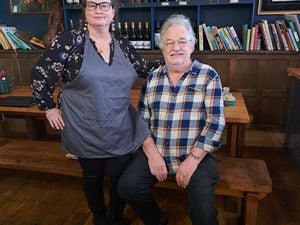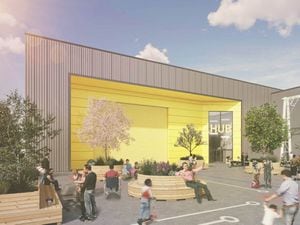Would you welcome a nuclear waste site under your community?
It is being billed as a multi-billion pound infrastructure project which will create hundreds of skilled, highly paid jobs.
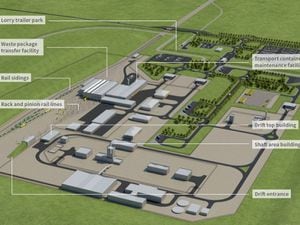
The community in which the scheme is based will also receive millions of pounds in much-needed regeneration cash, and crucial work to improve the environment.
Sounds good.
But will these incentives be enough to convince people that their communities should be used to dispose of radioactive waste?
Radioactive Waste Management (RWM), a subsidiary of the Nuclear Decommissioning Authority, is looking for a ‘willing community’ to host an underground disposal site for nuclear waste amid a growing drive for non-fossil fuel energy sources.
A geological survey has identified a number of areas of the West Midlands which could potentially accommodate waste.
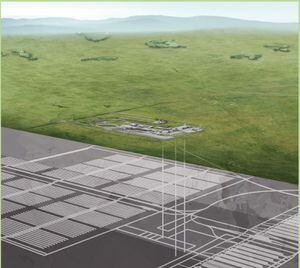
Among them are areas ‘between Telford and Market Drayton’, although more work is needed to confirm their suitability. Parts of north and west Shropshire have also been identified as potentially suitable.
Ann McCall, siting and engagement director at RWM, says there will be major benefits for the area which is eventually selected for the site.
“The eventual host community will benefit from significant inward investment in jobs, new facilities and infrastructure spanning several generations for over 100 years,” says Mrs McCall..
Radioactive waste
At the moment, radioactive waste is produced and stored at various sites around the UK, including MOD Donnington in Telford, although this relates to military equipment rather than waste from the nuclear energy industry.
RWM says that while these surface stores can be kept safe for many decades, they require continuous maintenance to keep them secure and in good condition, as some of the waste remains radioactive for hundreds of thousands of years.
“A Geological Disposal Facility (GDF), made up of deep underground vaults and tunnels, is internationally recognised as the best option for the long-term management of higher activity radioactive waste,” Mrs McCall says.
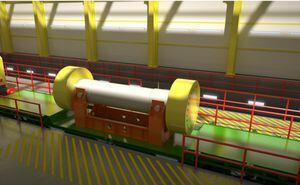
RWM insists safety is the number one priority, and with the risk of anybody developing health problems at any time in the future being lower than one in a million.
The process is new to the UK. Canada, Finland, France, Sweden and Switzerland are also looking at creating their own underground storage sites, with some of these said to be ‘well under way’.
Used fuel will arrive at the plant by rail, in reinforced containers. Trains are fitted with ‘impact limiters’ to ensure they cannot be damaged in transit.
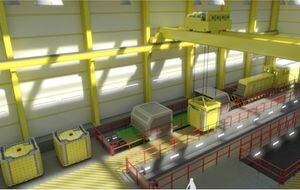
Radioactive waste is packed in secure, engineered containers, typically made of metal or concrete, and placed in a stable rock formation 0.6 miles below the surface. The containers will be surrounded by clay or cement, in what is called a ‘multi-barrier’ approach.
If a large number of packages arrive at once, some will be stored on the surface for a short period. The site will also contain a plant for cleaning and maintaining the outer containers used to transport some waste packages, and the transport vehicles.
'Communities at the heart'
Mrs McCall stresses that there will be no pressure on local communities to accept such a site, and that it will not be built anywhere that it does not have the full support of people living in the area.
“Communities will be right at the heart of the siting process, and a facility will be built where both a suitable site and a willing community are selected,” she says.
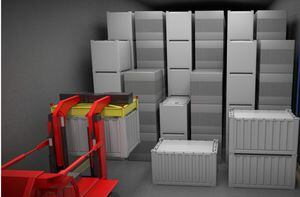
The process of choosing a site is expected to take between 15 and 20 years, and it is not expected that any waste will be disposed of until the 2040s at the earliest.
Suitable areas interested in hosting the site will be invited to form ‘community partnerships’, which will be eligible to receive up to £1 million a year during the investigation process.
Should the process reach the stage where detailed site investigations are carried out, the partnerships will then be entitled to receive up to £2.5 million. But an RWM spokesman says the real benefits will come for the area which is finally selected to host the plant.
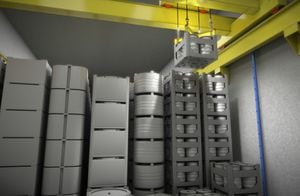
“It is a project on a similar scale to HS2,” he says. “There will be 550 jobs in any given year, but it will be much more than that during the construction phase.
“Then there are jobs in the supply chain, and these jobs will be there for 100 years or more.”
While the underground site would be vast, covering about eight square miles, the above-ground workings would be comparatively small, covering about 250 acres – similar to a medium-sized business park.
However, the difficulty will be in persuading communities about the benefits of such a development.
Councils respond
Councillor Peter Nutting, leader of Shropshire Council, says he would not want to see such a site in the county.
“The area concerned has a complex geology which would require much more detailed assessment,” he says.
“A high quality environment at the surface would be incompatible with such a facility. Shropshire Council therefore has no plans to consider supporting the location of such a facility in the county.”
Russell Griffin of Telford & Wrekin Council, said it was difficult to say whether the council would consider such a plan. He says: “At the moment it is just a proposal, until we know more it is difficult to say.”
Barbara Phillips, of Shrewsbury Friends of the Earth, says any such site would face fierce opposition.
“It’s such an enormously unknown quantity,” she says. “My feeling is if any local authority were to approach a particular community with a view to backing this, they would say they didn’t want it at all.”




